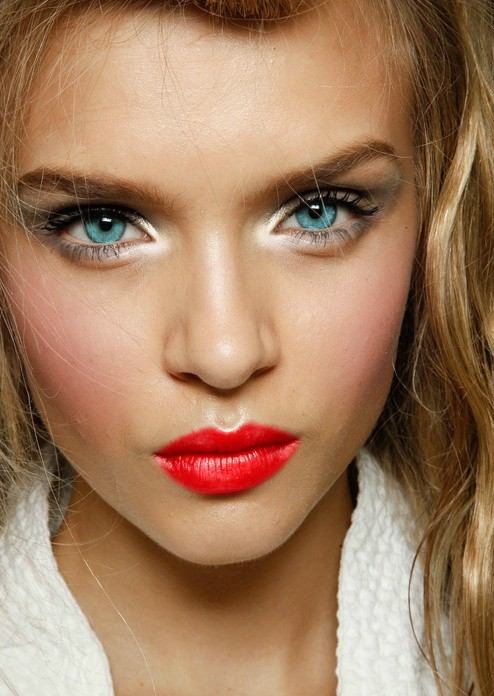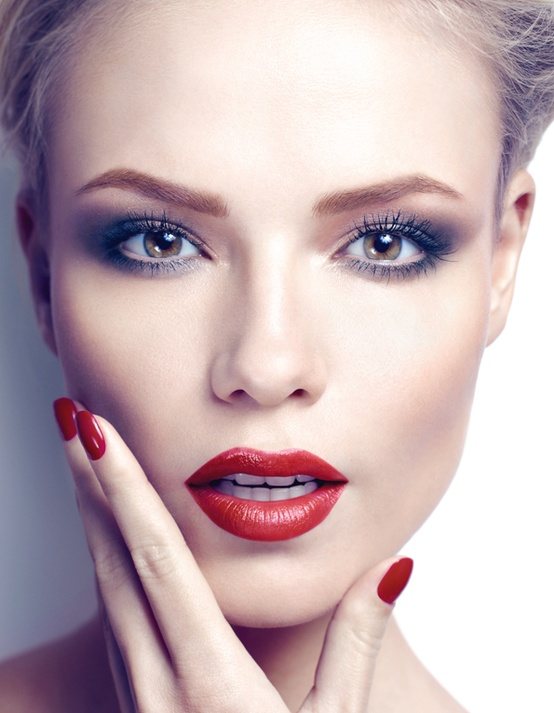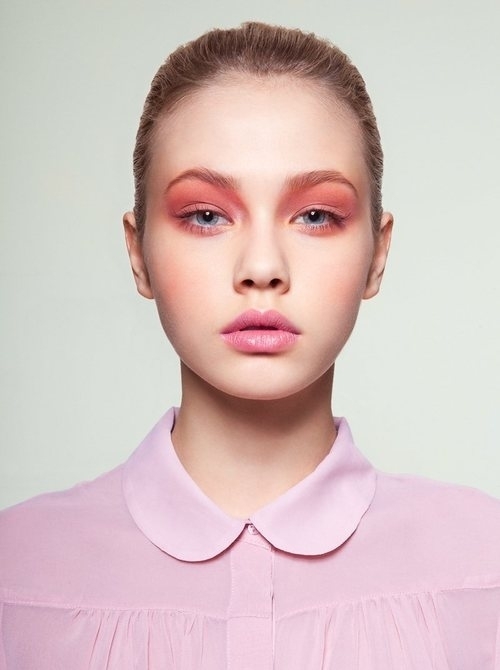whAT PRODUCTS, TOOLS, TECHNIQUES WORK BEST FOR YOUR HAIR?
Which Styling Products Work the Best?
For techniques and tools, my biggest thing is that I use very little heat styling. I get split ends when I blow dry frequently or use flat irons or other heat styling tools on the regular, so I’ll blow dry maybe once or twice a month now at the most (back when I did it every day in the ’90s, my hair was so dry that it was like a bale of hay growing out of my head).The smallest differences among straightening products often make or break how they perform for any given person. For example, for someone with thick, heavy hair, a lotion-like smoothing product can be best, but if you have fine hair, a lightweight spray can do the trick, and gels can work better for those with normal hair that needs a bit more lift. For best results, finish with a silicone serum or spray appropriate for your hair type (serum for thick hair and a spray for thin or normal hair density).
Technique is Everything
Here's how to straighten your hair at home, step-by-step:
- Wash and condition your hair. Use a gentle shampoo and conditioner to prepare your hair for the straightening process. Straightening, no matter how gentle you are, is tough on the hair, so "babying" it with gentle hair-care products beforehand can help prevent more damage.
- Towel dry your hair until it's more "damp" than "wet." This means less time spent blow drying your hair, and that's a good thing! Try a microfiber towel, which is gentler on the cuticle of the hair than regular towels.
- Smooth a dime-size amount of a straightening cream, balm, gel, or lotion throughout the hair to get it ready for blow drying and flat ironing. Make sure you don't overdo it; too much can make your hair limp instead of straight!
- Using a round bristle brush, carefully pull your hair straight as you blow it dry. You can alternate between your blow dryer's hotter and cooler settings to make sure you're not overheating your hair. Keep doing this until your hair is completely dry. Note: If you have very thick, curly hair, this can take a while! If you have a good round-brushing technique you can be done at this stage, but for lots of people it takes a bit more effort to get the smooth, straight (but not too flat) look you want. But don't worry: Using the flatiron will get the job done.
- NEVER use a flatiron on damp hair—you must blow dry your hair first. Using a flatiron on damp hair can lead to damage that literally breaks the hair because the temperature of the flatiron on damp hair can cause the water in the hair to literally boil, and then burst the hair shaft.
- Put the top half of your hair in a bun or clip it on top of your head. Divide the bottom half of your hair into small sections about one to two inches wide. Using a comb, pull out a section of hair as taut as possible with one hand, while smoothing a flatiron along that section with the other. Start at the roots of the hair and move to the end in one fluid motion, then repeat a couple of times to make sure that section of hair is straight. After one section is done to your satisfaction, repeat the process on the other sections.
- If you want a fuller look, apply a volumizing spray at the roots as you flatiron each section.
- When the bottom part of your hair is done, unclip the top part and begin working on those sections. Use a handheld mirror to check the back of your hair in a separate mirror to make sure you didn't miss anything.
- When you're all done, use a small amount of a silicone serum or spray for a smooth and polished look. Serums work best on coarse, thick hair, while sprays are preferred for normal to fine or thin hair.
Keratin Straightening Treatments (such as the Brazilian Blowout)
Before you book that appointment, however, know that thermal straightening is neither easy nor cheap. It's a multistep process that can take as long as three hours, and, depending on the length and thickness of your hair,
The process starts with a shampoo. You may be told that it's to protect your hair from the damage caused by the heat and chemicals used during the treatment, but it's really about cleansing your hair to remove any buildup.
Typically what follows is a straightening solution that's applied to the damp hair, which is then blown dry. After this, the stylist uses a flatiron to get the hair as straight as possible, then rinses the hair without shampoo and applies a conditioning mask which is really just a conditioner that sits on the hair for a minute before being rinsed.
After the mask is rinsed, a styling serum is applied, and then the hair is blown dry once again. By the time all this is done, you have unbelievably straight hair that requires little styling time to maintain the appearance.Note: This is the step-by-step process recommended by the Brazilian Blowout company. Your stylist might not use the same number of steps, and might not perform them in the same order, depending on the type of keratin straightening the salon offers.
Your Hair Was Professionally Straightened. Now What?
Inevitably, you'll be told at the salon that you need to use special products to maintain your look. That is largely a sales pitch. The Brazilian Blowout or keratin straightening brands have several products; for example, the Brazilian Blowout brand has no fewer than seven "aftercare" products! In all honesty, there are plenty of drugstore products that will condition and smooth your hair just as well for a fraction of the price. Look for products that will be gentle on your hair, and choose styling options designed to reduce frizz like silicone-based serums.After shelling out for the salon service, there's no reason to pile on additional costs with products that, despite the sales pitch you'll hear, are no different from their drugstore counterparts!
What about when your hair starts to grow and the untreated hair at the roots comes out curly again? Depending on how fast your hair grows, the new growth that appears will need to be straightened as well, though this is generally less time-consuming and less expensive than the original treatment.
Most hair types will have success with thermal straightening, except for some hair of those of African descent or hair that is double-processed or highlighted. African hair can be too fine and too fragile to handle the chemicals and heat, leading to excessive breakage and damage. For highlighted hair, the varying textures
Ultimately, there's no super-speedy way to transform curly or frizzy hair into stick-straight locks. You have to consider how much time, money, and effort you want to spend to get this look—and, of course, how long you want it to last, which determines whether you straighten your hair daily or go to the salon for a longer-lasting treatment.
How about you? What’s your hair texture (relaxed, straight, wavy, curly, super-curly), and what products, tools and techniques work best for you?








